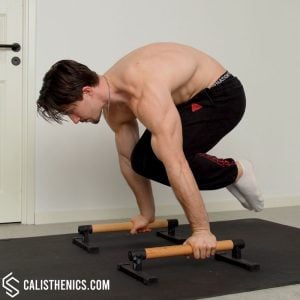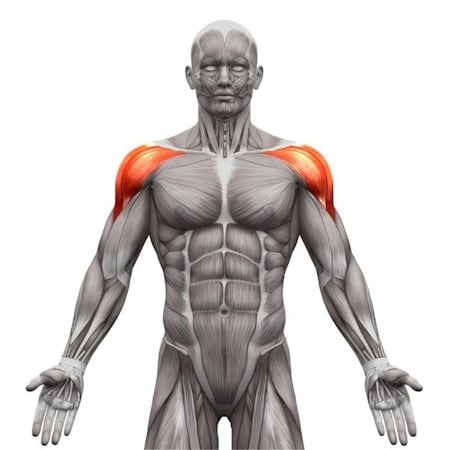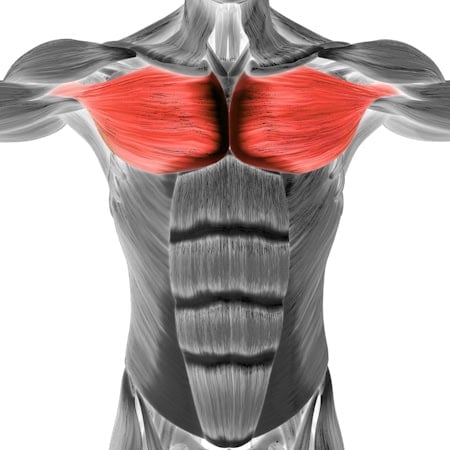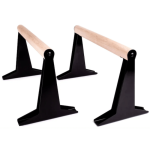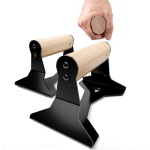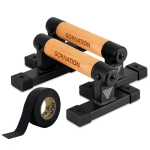Tuck Planche
How to do Tuck Planche?
The tuck planche is an intermediate-level bodyweight skill that serves as a progression toward the full planche. It requires upper-body and core strength, along with balance and wrist control. In this variation, the athlete lifts their feet off the ground and tucks their knees toward their chest while supporting their body on their hands. It’s a foundational move in calisthenics, gymnastics, and bodyweight training.
Check out our ▶️ planche training routine to unlock the full planche!
The equipment used is the ▶️ Premium Parallettes Pro from GORNATION --> For 10% off use discount code CS10.
CREDIT: This video was prepared in collaboration with calisthenics athlete Simon Imhäuser who was performing the exercise in the video and calisthenics coach Daniel Flefil who shot and edited the video.
Steps to Perform a Proper Tuck Planche
1. Start in a Frog Stand Position (Optional for Beginners)
• Place your hands shoulder-width apart on the ground, fingers pointing forward or slightly outward.
• Squat down and rest your knees on the back of your triceps for balance.
2. Shift Your Weight Forward
• Lean your shoulders over your hands while keeping your arms straight.
• Engage your core, shoulders, and wrists to maintain control.
3. Lift Your Feet Off the Ground
• Slowly lift your feet off the floor, keeping your knees tucked close to your chest.
• Avoid excessive swinging or using momentum—focus on controlled lifting.
4. Maintain a Protracted Shoulder Position
• Push your shoulder blades forward (scapular protraction) to engage your serratus anterior and maintain stability.
5. Engage Full-Body Tension
• Squeeze your core, glutes, and legs to keep your body compact and stable.
• Keep your elbows locked and avoid bending the arms.
6. Hold the Position
• Hold the tuck planche for as long as possible while maintaining proper form.
• Start with 5-10 seconds and gradually increase over time.
7. Lower Back to the Starting Position
• When fatigued, slowly lower your feet back to the ground with control.
Benefits of the Tuck Planche
✅ Builds Upper Body and Core Strength – Develops shoulders, core, and triceps for advanced calisthenics.
✅ Improves Balance and Stability – Requires body control and scapular engagement.
✅ Enhances Wrist and Grip Strength – Strengthens wrists, forearms, and fingers for hand balancing.
✅ Essential Planche Progression – A key stepping stone toward the full planche.
✅ Minimal Equipment Required – Can be performed on the floor or parallettes.
Common Mistakes to Avoid
🚫 Shrugging the Shoulders – Always keep your shoulders protracted (pushed forward) to prevent collapsing.
🚫 Bending the Arms – Keep your elbows locked; bending turns it into a bent-arm hold.
🚫 Leaning Too Far Back – Maintain a forward lean to distribute weight properly.
🚫 Arching the Lower Back – Engage your core to keep a neutral spine.
🚫 Holding Your Breath – Maintain steady breathing to help with endurance.
Tips for the proper execution of Tuck Planche
Keep Arms Straight – Do not bend your elbows; keep them locked for proper engagement.
Protract Your Scapula – Push your shoulders forward to stabilize the hold.
Tuck Your Knees Close – Keeping your knees tight against your chest reduces leverage and makes balancing easier.
Engage Your Wrists – Strengthen your wrists beforehand to avoid discomfort and strain.
Breathe Steadily – Do not hold your breath; maintain controlled breathing to sustain the hold.
Muscles worked when doing Tuck Planche
Primary Muscles
•Shoulders (Deltoids) – Support most of the body weight in the hold.
•Core (Rectus Abdominis, Transverse Abdominis) – Stabilizes the spine and prevents sagging.
•Serratus Anterior – Helps with scapular protraction and shoulder stability.
Secondary Muscles
•Triceps – Assist in locking the arms and supporting the hold.
•Wrists and Forearms – Engage to maintain hand stability.
•Glutes and Hip Flexors – Help keep the legs tucked and body compact.
Primary Muscle(s):
Secondary Muscle(s):
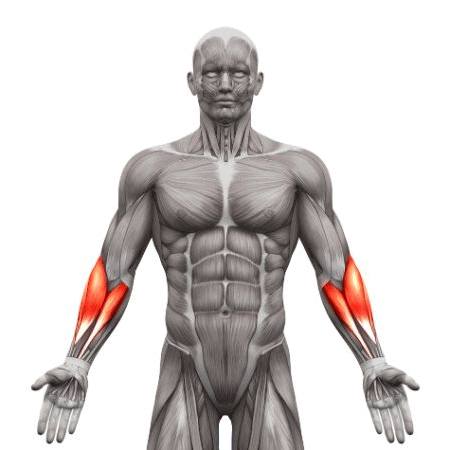
Forearm
Adjust the difficulty of Tuck Planche
How to make Tuck Planche harder?
How to make Tuck Planche easier?
How to make Tuck Planche harder?
To make Tuck Planche harder:
-
Extend Hold Duration • Aim to hold the tuck planche for 30+ seconds before advancing to harder progressions.
-
Tuck Planche Push-Ups • Lower your body slightly and push back up while keeping the tuck position.
-
Advanced Tuck Planche • Extend your hips slightly backward, moving toward a straddle or full planche.
-
Perform on Rings • Holding a tuck planche on gymnastics rings adds an instability factor, increasing difficulty.
-
Use a Weighted Vest • Adding weight makes the movement more challenging and builds strength for the full planche.
How to make Tuck Planche easier?
To make Tuck Planche easier:
-
Use Parallel Bars or Parallettes • Using elevated parallettes makes wrist positioning more comfortable and improves balance.
-
Perform Tuck Planche with Toe Support • Keep your toes lightly touching the ground for partial support.
-
Train the Frog Stand First • Master the frog stand, where your knees rest on your elbows, before progressing.
-
Use Resistance Bands for Assistance • Place a resistance band under your hips, anchored to a pull-up bar for support.
-
Increase Wrist Strength • Strengthen your wrists and forearms with exercises like wrist push-ups and handstands.

